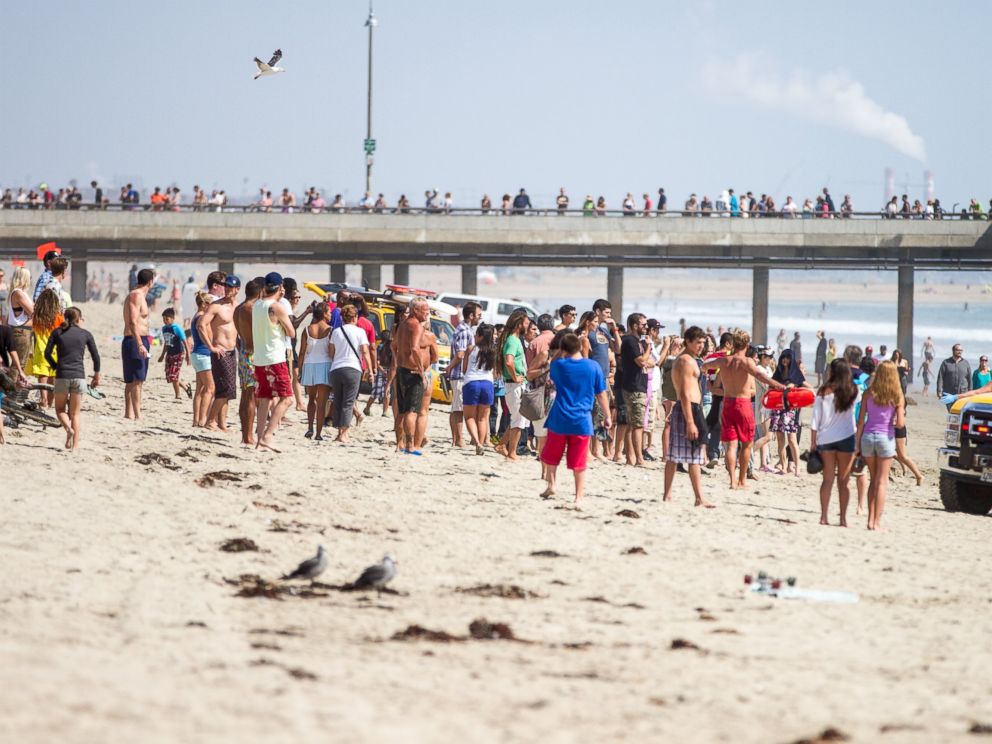Swimmer’s or Surfer’s Shoulder is a common condition affecting both competitive and recreational swimmers and surfers. It is basically an overuse injury which results in shoulder impingement or rotator cuff type symptoms.
HOW WE GET IT
The action of paddling in surfing strengthens the larger muscles around the shoulder, some of the major ones taxed being the pec major, pec minor, deltoids, upper trapezius, levator scapulae, lats and serratus posterior. These muscles when strong relative to their opposite acting muscles tend to apply upward force on the arm bone, migrating it north toward the bone above. The rotator cuff muscles when strong will apply a downward force on the ball of the arm bone.
Because of regular paddling we tend to become strong in the muscles that apply this upward force and relatively weak in the rotator cuff muscles that apply downward force. This can result in the ball of the arm bone sliding upwards in the shoulder joint. Impingement Syndrome occurs when there is abnormal contact between the rotator cuff muscles and the roof of the shoulder (acromion). Normally, a sac of tissue (bursa) sits on top of the rotator cuff, allowing the muscles to glide smoothly as the shoulder moves in different directions. When the arm is raised, the space between the rotator cuff and acromion becomes smaller. There is usually enough room in the shoulder joint for this to occur without pain. With repeated paddling, irritation and damage to the rotator cuff can occur and the bursa can swell. This decreases the space in the shoulder and compresses the rotator cuff muscles, causing pain.
A subtype of impingement is called internal impingement. This occurs as a result of imbalanced forces in the shoulder capsule, which is a fibrous tissue. In some people, the front part of the capsule is too loose, or unstable, and the back part is way too tight. This results in an imbalance of forces across the joint, especially with overhead stuff like paddling. Abnormal contact between the rotator cuff muscles and the back part of the capsule occurs, damaging the rotator cuff, capsule, and labrum and ultimately causing pain.
If this impingement is allowed to go on for an extended period of time it can cause small tears in the rotator cuff tendons, reduce blood supply and important nutrition to the shoulder joint.
Muscular imbalance is a key problem, but also so can be restricted mobility in the thoracic spine, neck, hips and shoulders. Paddling places a massive amount of stress on the rotator cuff in general, they need to work their derrière’s off to keep up with the stronger muscles that surround them. The freestyle and paddling strokes result in overdevelopment of both the shoulders internal rotators (subscapularis), compared to external rotators (infraspinatus) and the anterior chest wall musculature (pectoralis major and minor) relative to the posterior wall scapular stabilisers (rhomboids, levator scapuli, serratus anterior and middle/lower trapezius).
Rotator cuff injury is a continuum beginning with impingement and progressing to a cuff tear. The cuff tendons have areas of low blood supply, making healing more difficult after injury. As a result, the tendons degenerate with time. This is why most tears occur in late middle age.
OTHER AREAS AFFECTED THAT AFFECT THE SHOULDER THAT MAY NOT HAVE CROSSED YOUR MIND
Surfing creates tight hip flexors.
The hip rotates toward the back foot and this over time creates imbalanced loading through the spine, hips, knees, ankles.
Tension created by imbalances in the hip cause core instability; which affects your surfing and just about everything else!
Increased muscle-shortening keeps the right shoulder (natural footed) under stress and out of
alignment, decreasing its flexibility, coordination, and strength.
Muscle imbalances from being right-handed causes the right hip to draw upward as the right shoulder is pulled down, creating ongoing stress that over time affects all of the joints in the body.
The neck, chest, and the internal rotator muscles of the shoulders all shorten and limit normal range of motion.
Diagnosis
Pain at the front or back of the shoulder during or after surfing, especially when you lift your arm to paddle.
Often rounded shoulders and slight winging of the shoulder blades.
Pain in lifting the arm straight up and straight out to the side.
Shoulder instability.
Treatment
Treatment involves restoring softness to overly tight muscles (therapist, deep sports muscle therapy, trigger point release, muscle corrective therapy), flexibility in tight muscles/fascia, ensuring optimal mobility in the neck, upper back and hips, and strengthening the rotator cuff as well as weak opposing muscles.
Ideally these prehab or rehab exercises, stretches and muscle therapy should be part of the surfers training so as to prevent the condition in the first place. Learning correct paddling technique also helps to offset rotator cuff injuries. For surfers over 40, it is important to listen to your body. There is a difference in the pain we feel from muscle soreness and that from our joints. Respect the signals. It is important to rest and stretch the shoulder as needed to maintain shoulder health – especially if you want to keep surfing for life.
It’s all connected. For a lot of surfers, the front of our shoulders are very over used, while the back of the shoulder is not. There’s also a lot of funky stuff going on in other parts of the body from the ankle up. See this post for some ideas on therapy, stretching and exercises -Shoulder Problems in Sport & Exercise - part two
King Kelly keeping his joints mobile.
































